Jiaxin Qi
Class Is Invariant to Context and Vice Versa: On Learning Invariance for Out-Of-Distribution Generalization
Aug 06, 2022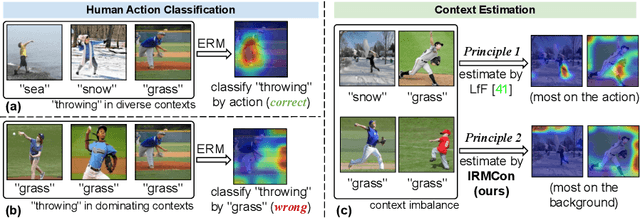
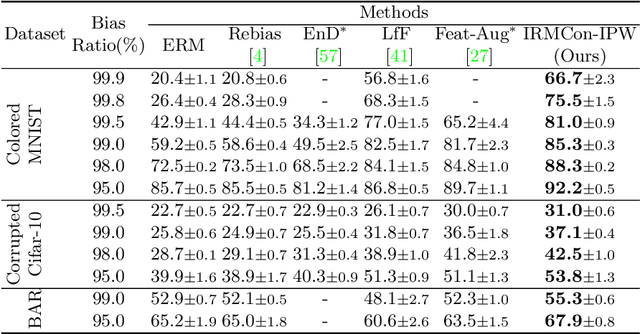
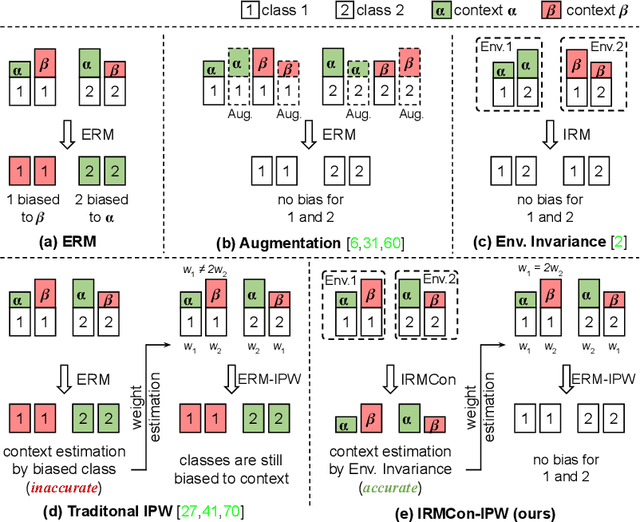
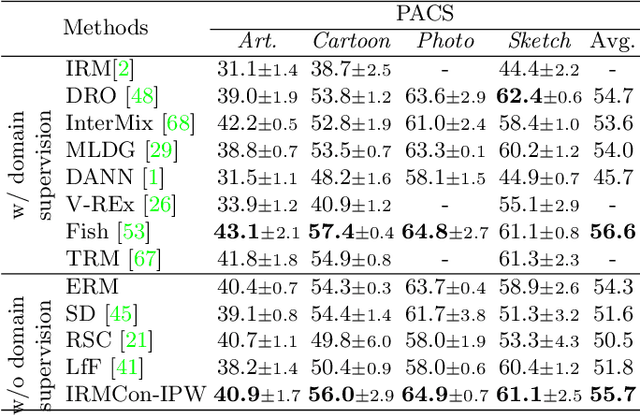
Abstract:Out-Of-Distribution generalization (OOD) is all about learning invariance against environmental changes. If the context in every class is evenly distributed, OOD would be trivial because the context can be easily removed due to an underlying principle: class is invariant to context. However, collecting such a balanced dataset is impractical. Learning on imbalanced data makes the model bias to context and thus hurts OOD. Therefore, the key to OOD is context balance. We argue that the widely adopted assumption in prior work, the context bias can be directly annotated or estimated from biased class prediction, renders the context incomplete or even incorrect. In contrast, we point out the everoverlooked other side of the above principle: context is also invariant to class, which motivates us to consider the classes (which are already labeled) as the varying environments to resolve context bias (without context labels). We implement this idea by minimizing the contrastive loss of intra-class sample similarity while assuring this similarity to be invariant across all classes. On benchmarks with various context biases and domain gaps, we show that a simple re-weighting based classifier equipped with our context estimation achieves state-of-the-art performance. We provide the theoretical justifications in Appendix and codes on https://github.com/simpleshinobu/IRMCon.
Invariant Feature Learning for Generalized Long-Tailed Classification
Jul 19, 2022
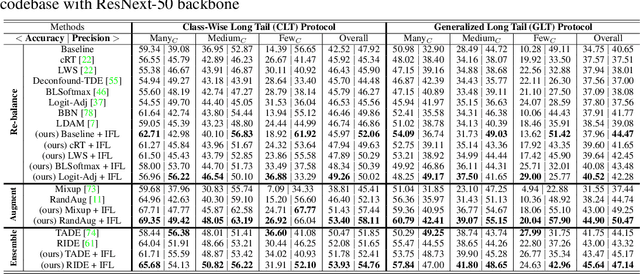


Abstract:Existing long-tailed classification (LT) methods only focus on tackling the class-wise imbalance that head classes have more samples than tail classes, but overlook the attribute-wise imbalance. In fact, even if the class is balanced, samples within each class may still be long-tailed due to the varying attributes. Note that the latter is fundamentally more ubiquitous and challenging than the former because attributes are not just implicit for most datasets, but also combinatorially complex, thus prohibitively expensive to be balanced. Therefore, we introduce a novel research problem: Generalized Long-Tailed classification (GLT), to jointly consider both kinds of imbalances. By "generalized", we mean that a GLT method should naturally solve the traditional LT, but not vice versa. Not surprisingly, we find that most class-wise LT methods degenerate in our proposed two benchmarks: ImageNet-GLT and MSCOCO-GLT. We argue that it is because they over-emphasize the adjustment of class distribution while neglecting to learn attribute-invariant features. To this end, we propose an Invariant Feature Learning (IFL) method as the first strong baseline for GLT. IFL first discovers environments with divergent intra-class distributions from the imperfect predictions and then learns invariant features across them. Promisingly, as an improved feature backbone, IFL boosts all the LT line-up: one/two-stage re-balance, augmentation, and ensemble. Codes and benchmarks are available on Github: https://github.com/KaihuaTang/Generalized-Long-Tailed-Benchmarks.pytorch
Deconfounded Visual Grounding
Dec 31, 2021



Abstract:We focus on the confounding bias between language and location in the visual grounding pipeline, where we find that the bias is the major visual reasoning bottleneck. For example, the grounding process is usually a trivial language-location association without visual reasoning, e.g., grounding any language query containing sheep to the nearly central regions, due to that most queries about sheep have ground-truth locations at the image center. First, we frame the visual grounding pipeline into a causal graph, which shows the causalities among image, query, target location and underlying confounder. Through the causal graph, we know how to break the grounding bottleneck: deconfounded visual grounding. Second, to tackle the challenge that the confounder is unobserved in general, we propose a confounder-agnostic approach called: Referring Expression Deconfounder (RED), to remove the confounding bias. Third, we implement RED as a simple language attention, which can be applied in any grounding method. On popular benchmarks, RED improves various state-of-the-art grounding methods by a significant margin. Code will soon be available at: https://github.com/JianqiangH/Deconfounded_VG.
Two Causal Principles for Improving Visual Dialog
Nov 24, 2019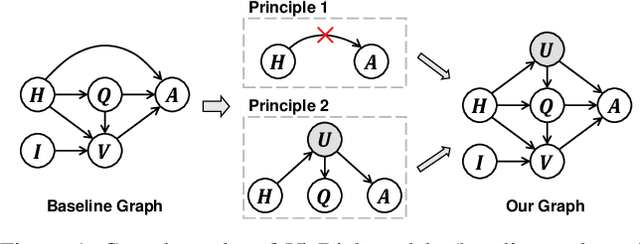

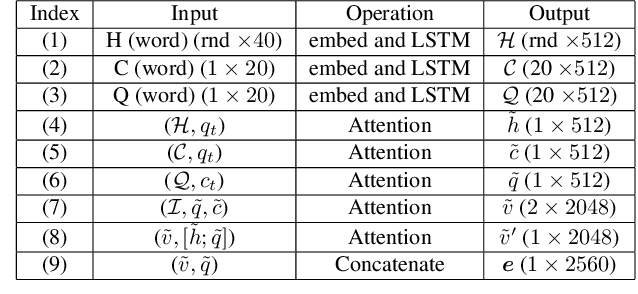
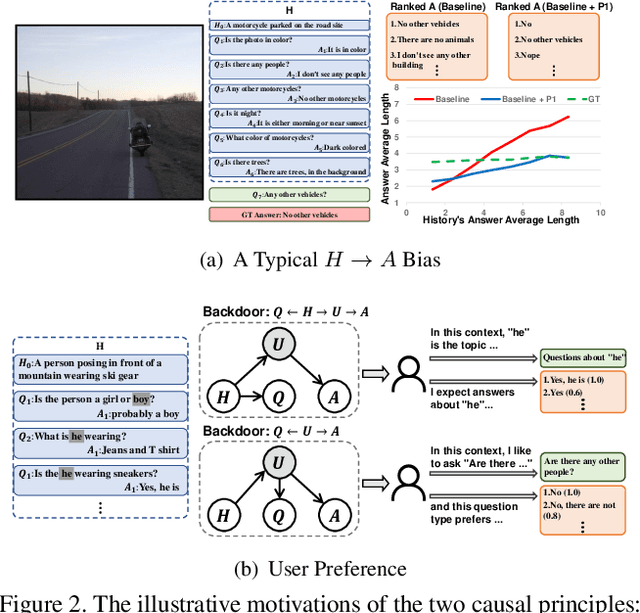
Abstract:This paper is a winner report from team MReaL-BDAI for Visual Dialog Challenge 2019. We present two causal principles for improving Visual Dialog (VisDial). By "improving", we mean that they can promote almost every existing VisDial model to the state-of-the-art performance on Visual Dialog 2019 Challenge leader-board. Such a major improvement is only due to our careful inspection on the causality behind the model and data, finding that the community has overlooked two causalities in VisDial. Intuitively, Principle 1 suggests: we should remove the direct input of the dialog history to the answer model, otherwise the harmful shortcut bias will be introduced; Principle 2 says: there is an unobserved confounder for history, question, and answer, leading to spurious correlations from training data. In particular, to remove the confounder suggested in Principle 2, we propose several causal intervention algorithms, which make the training fundamentally different from the traditional likelihood estimation. Note that the two principles are model-agnostic, so they are applicable in any VisDial model.
 Add to Chrome
Add to Chrome Add to Firefox
Add to Firefox Add to Edge
Add to Edge